Cobra MR F45-D User Manual
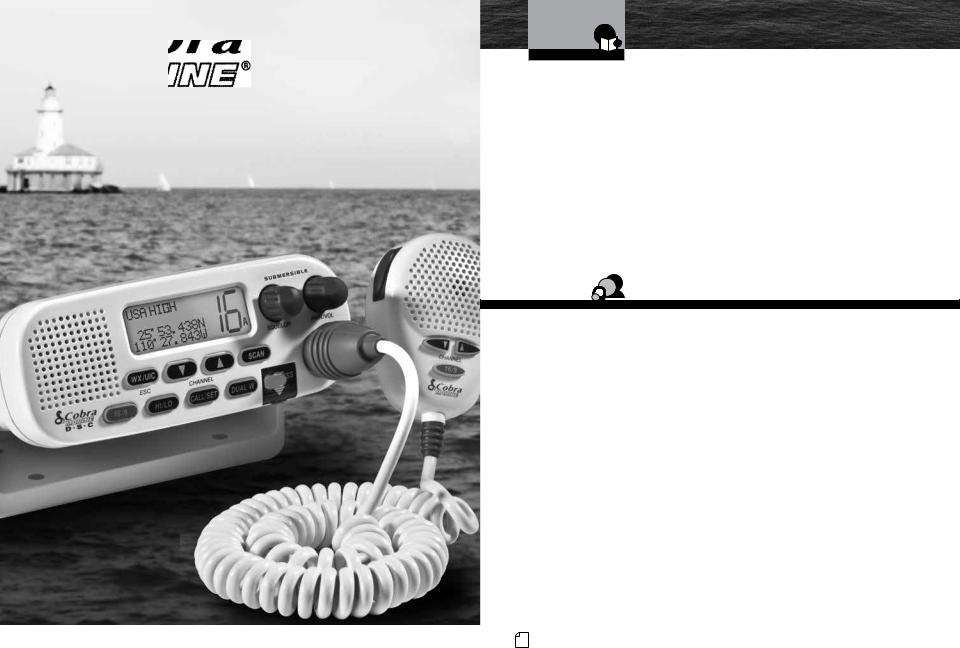
Owner’s Manual
Version C |
|
|
in China Part No. 480-684-P |
MR F45-D |
|
Printed |
|
|
Class-D Fixed Mount VHF Radio |
|
|
|
|
|
|
|
|
|
Nothing Comes Close to a Cobra® |
English |
|
|
|
Our Thanks To You
Introduction
Thank you for purchasing a CobraMarine® VHF radio. Properly used, this Cobra® product will give you many years of reliable service.
How Your CobraMarine VHF Radio Works
This radio is a VHF transceiver for fixed mounting on your boat. It gives you 2-way vessel-to-vessel and vessel-to-shore station communications, primarily for safety and secondarily for navigation and operational purposes. With it, you can call for help, get information from other boaters, talk to lock or bridge tenders and make radiotelephone calls to anywhere in the world through a marine operator.
Besides 2-way communications, in the U.S.A., the radio can provide quick
access to receive seven NOAA (National Oceanographic and Atmospheric Administration) and two Canadian weather channels for alerting you to weather emergencies with a tone on a weather channel you can select for your area.
Customer Assistance
Customer Assistance
Should you encounter any problems with this product, or not understand
its many features, please refer to this owner’s manual. If you require further assistance after reading this manual, Cobra Electronics offers the following
customer assistance services:
For Assistance In The U.S.A.
Automated Help Desk English only.
24 hours a day, 7 days a week 773-889-3087 (phone).
Customer Assistance Operators English and Spanish.
8:00 a.m. to 5:30 p.m. Central Time Mon. through Fri. (except holidays) 773-889-3087 (phone).
Questions English and Spanish.
Faxes can be received at 773-622-2269 (fax).
Technical Assistance English only.
www.cobra.com (on-line: Frequently Asked Questions).
English and Spanish. productinfo@cobra.com (e-mail).
For Assistance Outside The U.S.A.
Contact Your Local Dealer |
©2015 Cobra Electronics Corporation |
|
6500 West Cortland Street |
|
Chicago, Illinois 60707 USA |
A1 English |
www.cobra.com |
|
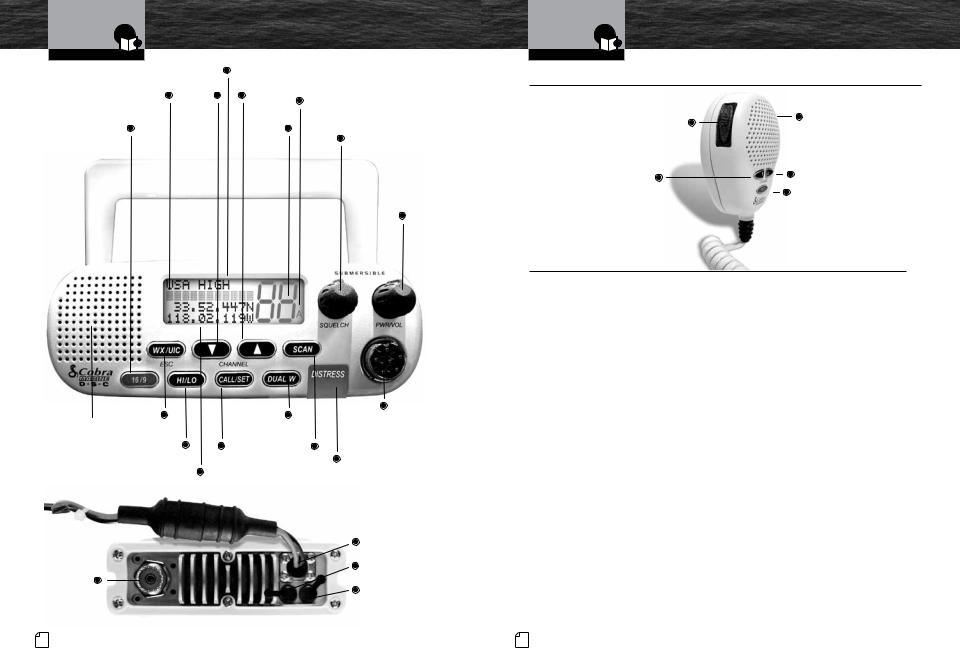
Transceiver Controls,
Indicators And Connections
Introduction
Backlit LCD
Screen
Radio Status and |
Down |
Data Display |
Button |
Instant Channel |
|
16/9 Button |
|
Weather/UIC
Speaker  Button
Button
High/Low Power
Button
Position Coordinates –
Latitude and Longitude
Antenna
Socket
Up |
Simplex |
|
Button |
||
Operation |
||
Active |
Icon |
|
Squelch |
||
Channel |
||
Number |
Knob |
On-Off
Power/
Volume
Knob
Dual-Watch |
Microphone |
|
Cord |
||
Button |
Connection |
|
Call/Set |
Scan |
Socket |
|
||
Button |
Button |
DSC Distress Button |
|
|
(Behind Red Spring |
|
|
Loaded Cover) |
Power
Connection
External
Speaker Jack
Global Positioning
System (GPS) Jack
Microphone And
Product Features
Introduction
Microphone With Auxiliary Controls |
|
|
• |
||
Up/Down |
|
|
|
|
|
|
|
|
|
|
|
Buttons |
Talk |
Microphone |
|
|
|
Can be used |
|
|
|
||
Button |
|
|
|
|
|
instead of those |
|
|
|
|
|
on the transceiver. |
|
|
|
|
|
Instant Channel |
Down |
Up |
|
|
|
16/9 Button |
Button |
Button |
|
|
|
Can be used |
|
Instant |
|
|
|
instead of the |
|
Channel |
|
|
|
|
16/9 Button |
|
|
|
|
one on the |
|
|
|
|
|
transceiver. |
|
|
|
|
|
Product Features |
|
• |
|
|
|
Dual Power |
|
Scan |
|
|
|
|
|
|
|
||
Selectable to one (1) or 25 watts output |
Lets you scan through all channels in the |
|
|
|
|
power for near or distant calling. |
active channel map to find conversations |
|
|
|
|
USA/International/Canada Channels |
in progress. |
|
|
|
|
Dual-Watch |
|
|
|
||
Allows operation on any of the three (3) |
|
|
|
||
different channel maps established for these |
Lets you monitor two (2) channels at once |
|
|
|
|
areas. |
|
— Channel 16 and one (1) user selectable |
|
|
|
All NOAA Weather Channels |
channel. |
|
|
|
|
Controls On The Microphone |
|
|
|
||
Instant access to all of the National Weather |
|
|
|
||
Channels, 24 hours a day. |
Handy control buttons on the microphone |
|
|
|
|
Emergency Weather Alert |
let you operate one (1) handed at a distance |
|
|||
from the radio. |
|
|
|
||
Can alert you with an audible tone and visual |
|
|
|
||
|
|
|
|
||
alarm if threatening weather is nearby. |
Illuminated Buttons |
|
|
|
|
Instant Channel 16/9 |
Helps you quickly find the buttons |
|
|
|
|
you need in low light conditions. |
|
|
|
||
Instant access to the priority |
|
|
|
||
|
|
|
|
||
Channel 16 and calling Channel 9. |
Mounting Kits Included |
|
|
|
|
Digital Selective Calling (DSC |
Radio can be mounted on or under almost |
|
|
|
|
any flat surface using one (1) |
|
|
|
||
Class-D) |
|
|
|
|
|
|
of the included brackets. |
|
|
|
|
Allows the ability to maintain a listening watch on |
|
|
|
||
VHF Channel 16 while simultaneously monitoring |
Waterproof |
|
|
|
|
Channel 70 for DSC calls. Allows sending a |
Submersible to one (1) meter of water |
|
|
|
|
distress message at the touch of a button as well |
for 30 minutes — meets JIS7 Standards. |
|
|
|
|
as specific station-to-station calls. Radio utilizes |
|
|
|
|
|
two (2) built-in encoders (receivers). |
|
|
|
|
|
A2 English |
A3 English |
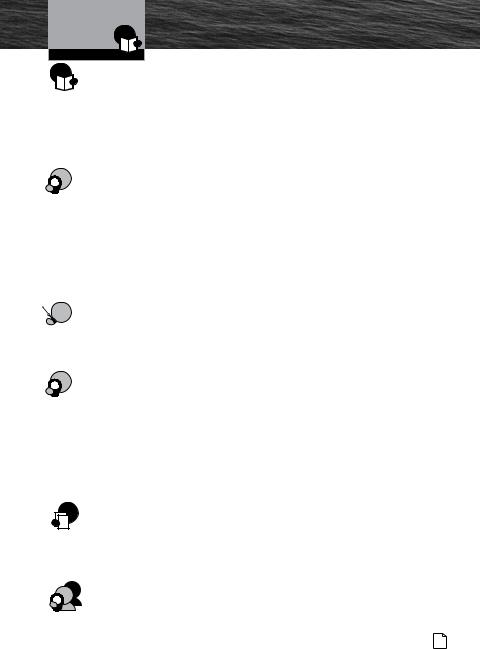
Table Of Contents |
|
Introduction |
|
Introduction |
|
Our Thanks To You. . . . . . . . . . . . . . . . . . . . . . . . . . . . . . . . . . . . . . . . . . . . . . . . . . . . |
A1 |
Customer Assistance.. . . . . . . . . . . . . . . . . . . . . . . . . . . . . . . . . . . . . . . . . . . . . . . . . . |
A1 |
Transceiver Controls, Indicators And Connections . . . . . . . . . . . . . . . . . . . . . . . . . . . . |
A2 |
Microphone. . . . . . . . . . . . . . . . . . . . . . . . . . . . . . . . . . . . . . . . . . . . . . . . . . . . . . . . . . |
A3 |
Product Features. . . . . . . . . . . . . . . . . . . . . . . . . . . . . . . . . . . . . . . . . . . . . . . . . . . . . . |
A3 |
Important Safety Information. . . . . . . . . . . . . . . . . . . . . . . . . . . . . . . . . . . . . . . . . . . . . |
2 |
Recommendations For Marine Communication. . . . . . . . . . . . . . . . . . . . . . . . . . . . . . . |
4 |
VHF Marine Radio Protocols |
|
FCC Licensing Information. . . . . . . . . . . . . . . . . . . . . . . . . . . . . . . . . . . . . . . . . . . . . . . |
5 |
VHF Marine Radio Procedures. . . . . . . . . . . . . . . . . . . . . . . . . . . . . . . . . . . . . . . . . . . . |
6 |
Voice Calling . . . . . . . . . . . . . . . . . . . . . . . . . . . . . . . . . . . . . . . . . . . . . . . . . . . . . . . . . |
. 7 |
Digital Selective Calling (DSC). . . . . . . . . . . . . . . . . . . . . . . . . . . . . . . . . . . . . . . . . . . . |
8 |
Maritime Mobile Service Identity (MMSI). . . . . . . . . . . . . . . . . . . . . . . . . . . . . . . . . . . |
. 9 |
Radiotelephone Calls.. . . . . . . . . . . . . . . . . . . . . . . . . . . . . . . . . . . . . . . . . . . . . . . . . . |
10 |
Emergency Messages And Distress Procedure. . . . . . . . . . . . . . . . . . . . . . . . . . . . . . . |
10 |
Marine Distress Procedure — DSC.. . . . . . . . . . . . . . . . . . . . . . . . . . . . . . . . . . . . . . . |
13 |
Installation and Start-Up |
|
Included In This Package. . . . . . . . . . . . . . . . . . . . . . . . . . . . . . . . . . . . . . . . . . . . . . . |
14 |
Optional Accessories.. . . . . . . . . . . . . . . . . . . . . . . . . . . . . . . . . . . . . . . . . . . . . . . . . . |
15 |
Mounting And Powering The Radio. . . . . . . . . . . . . . . . . . . . . . . . . . . . . . . . . . . . . . . |
16 |
Antenna Requirements And Attachment . . . . . . . . . . . . . . . . . . . . . . . . . . . . . . . . . . . . |
20 |
External Devices And Connections. . . . . . . . . . . . . . . . . . . . . . . . . . . . . . . . . . . . . . . . |
22 |
Operating Your Radio |
|
Getting Started. . . . . . . . . . . . . . . . . . . . . . . . . . . . . . . . . . . . . . . . . . . . . . . . . . . . . . . |
24 |
Set-Up Routines. . . . . . . . . . . . . . . . . . . . . . . . . . . . . . . . . . . . . . . . . . . . . . . . . . . . . . |
28 |
Voice Transmission.. . . . . . . . . . . . . . . . . . . . . . . . . . . . . . . . . . . . . . . . . . . . . . . . . . . |
32 |
Weather Radio And Alert.. . . . . . . . . . . . . . . . . . . . . . . . . . . . . . . . . . . . . . . . . . . . . . . |
34 |
Advanced Operation. . . . . . . . . . . . . . . . . . . . . . . . . . . . . . . . . . . . . . . . . . . . . . . . . . . |
35 |
Digital Select Calling (DSC) Set-Up. . . . . . . . . . . . . . . . . . . . . . . . . . . . . . . . . . . . . . . . |
38 |
Digital Select Calling (DSC) Operation. . . . . . . . . . . . . . . . . . . . . . . . . . . . . . . . . . . . . |
44 |
Maintenance & Troubleshooting. . . . . . . . . . . . . . . . . . . . . . . . . . . . . . . . . . . . . . . . . . |
56 |
Specifications. . . . . . . . . . . . . . . . . . . . . . . . . . . . . . . . . . . . . . . . . . . . . . . . . . . . . . . . |
57 |
Appendix
VHF Marine Channel Assignments. . . . . . . . . . . . . . . . . . . . . . . . . . . . . . . . . . . . . . . . 58
Weather Channel Assignments . . . . . . . . . . . . . . . . . . . . . . . . . . . . . . . . . . . . . . . . . . . 71
World City Time Zones . . . . . . . . . . . . . . . . . . . . . . . . . . . . . . . . . . . . . . . . . . . . . . . . . 72
Warranty
Limited 3-Year Warranty. . . . . . . . . . . . . . . . . . . . . . . . . . . . . . . . . . . . . . . . . . . . . . . . 73
Customer Service |
|
Product Service.. . . . . . . . . . . . . . . . . . . . . . . . . . . . . . . . . . . |
. . . . . . . . . . . . . . . . . . . 74 |
Flush Mount Template.. . . . . . . . . . . . . . . . . . . . . . . . . . . . . . . . . |
. . . . . . . . . . . . . . . . 75 |
|
Nothing Comes Close to a Cobra® 1 |
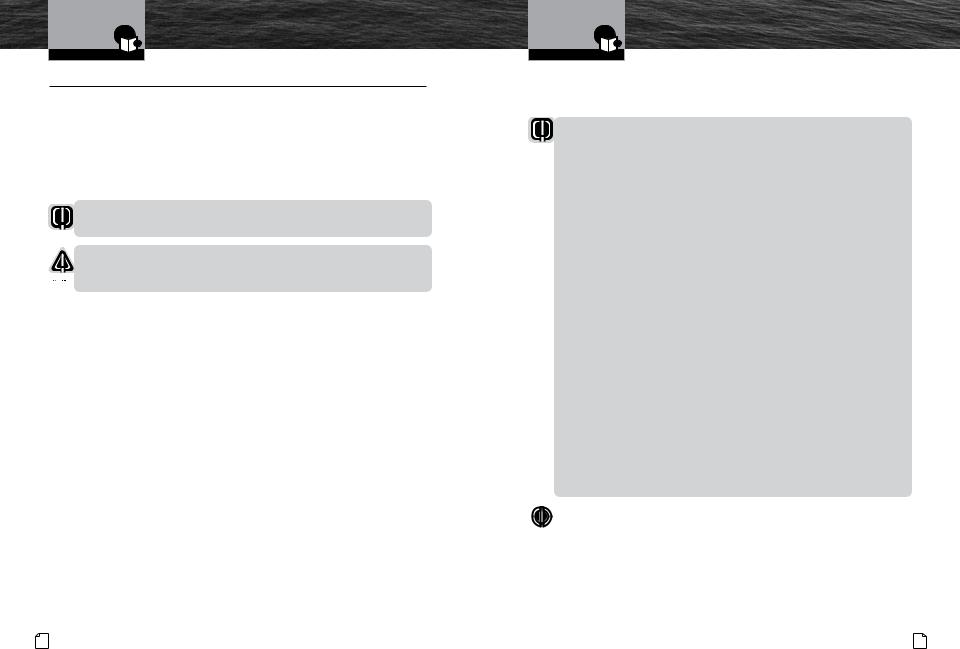
Important Safety Information
Introduction
Important Safety Information |
• |
|
Before installing and using your CobraMarine VHF radio, please read these general precautions and warnings.
Warning And Caution Statements
To make the most of this radio, it must be installed and used properly.. Please read the installation and operating instructions carefully before installing and using it.. Special attention must be paid to the WARNING and CAUTION statements in this manual..
WARNING
Statements identify conditions that could result in personal injury or loss of life..
CAUTION
Statements identify conditions that could cause damage to the radio or other equipment..
Safety Training Information
This CobraMarine radio is designed for and classified as “Occupational Use Only..” It must only be used in the course of employment by individuals aware of both the hazards and the ways to minimize those hazards.. This radio is NOT intended for use in an uncontrolled environment by the “General Population..”
This radio has been tested and complies with the FCC RF exposure limits for “Occupational Use Only..” This CobraMarine VHF radio also complies with the following guidelines and standards regarding RF energy and electromagnetic energy levels as well as evaluation of those levels for human exposure:
νFCC OET Bulletin 65 Edition 97-01 Supplement C, Evaluating Compliance with FCC Guidelines for Human Exposure to Radio Frequency Electromagnetic Fields..
νAmerican National Standards Institute (C95..1-1992), IEEE Standard for Safety Levels with Respect to Human Exposure to Radio Frequency Electromagnetic Fields, 3 kHz to 300 GHz..
νAmerican National Standards Institute (C95..3-1992), IEEE Recommended Practice for the Measurement of Potentially Hazardous Electromagnetic Fields — RF and Microwave..
2 English
Important Safety Information
Introduction
The following WARNINGS and CAUTIONS will make you aware of RF exposure hazards and how to assure you operate the radio within the FCC RF exposure limits established for it..
WARNINGS
Your radio generates electromagnetic RF (radio frequency) energy when
it is transmitting.. To insure that you and those around you are not exposed to excessive amounts of that energy, DO NOT touch the antenna when transmitting and KEEP yourself and all others on your vessel the required distance away from the antenna while transmitting.. SEE page 30 in the antenna requirements section for further information..
DO NOT operate the radio without a proper antenna or equivalent dummy load attached.. Doing so may expose you to excessive RF energy and will damage the radio..
DO NOT transmit more than 50% of the time the radio is in use — 50% duty cycle.. The radio is transmitting when the Talk button is pressed and the transmit information shows on the LCD screen..
ALWAYS use only Cobra authorized accessories..
DO NOT operate the radio in an explosive atmosphere, near blasting sites, or in any area where signs are posted prohibiting radio transmissions..
NEVER connect the transceiver to AC power.. It can be a fire hazard, may cause an electric shock, and may damage the transceiver..
NEVER mount the transceiver or microphone where they might interfere with operation of your vessel or cause injury..
DO NOT allow children or anyone unfamiliar with proper procedures to operate the radio without supervision..
Failure to observe any of these warnings may cause you to exceed FCC RF exposure limits or create other dangerous conditions..
NOTE
Throughout this manual, the term “Transceiver” will be used to identify the main unit containing the LCD screen and controls.. The term “Radio” will be used to identify the entire equipment including transceiver, microphone, antenna and any attached external speakers..
Nothing Comes Close to a Cobra® 3
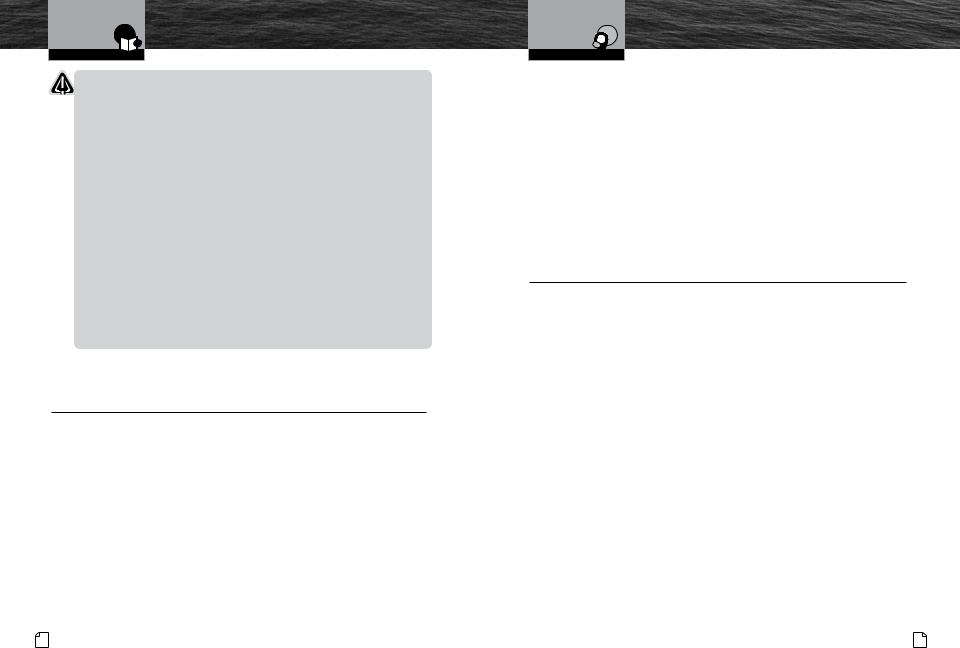
Recommendations For
Marine Communication
Introduction
CAUTIONS
AVOID using or storing the radio at temperatures below -4°F (-20°C) or above 140°F (60°C)..
NEVER connect the transceiver to DC power greater than 16 volts or to
any DC source with reversed polarity.. Doing so will damage the transceiver..
DO NOT cut the power cables attached to the transceiver.. Improper reconnection with reversed polarity will damage the transceiver..
POSITION your radio, external speakers, and cables at least three (3) feet (0..9 m) away from your vessel’s magnetic navigation compass.. CHECK your compass before and after installation to be sure that it has not introduced any deviation..
DO NOT attempt to service any internal parts yourself.. Have any necessary service performed by a qualified technician..
DO NOT drop the transceiver or microphone.. Doing so may crack the case or damage a waterproof seal.. Once these items have been dropped, the original waterproofing cannot be guaranteed..
DO NOT use chemicals or solvents such as mineral spirits and alcohol to clean your radio.. They may damage the case surfaces..
Changes or modifications to your radio MAY VOID its compliance with FCC (Federal Communications Commission) rules and make it illegal to use..
Recommendations For Marine Communication |
• |
|
The frequencies your radio uses are set aside to enhance safety afloat and for vessel navigation and operational messages over a range suitable for nearshore voyages.. If the 25 watt maximum output of your radio isn’t sufficient for the distances you travel from the coast, consider installing more powerful radio equipment such as HF single side band or satellite radio for your vessel..
The U..S.. Coast Guard does not endorse cellular telephones as substitutes for marine radios.. They generally cannot communicate with rescue vessels and, if you make a distress call on a cellular telephone, only the party you call will
be able to hear you.. Additionally, cellular telephones may have limited coverage over water and can be hard to locate.. If you don’t know where you are, the Coast Guard will have difficulty finding you if you’re using a cellular telephone..
However, cellular telephones can have a place on board where cellular coverage is available — to allow social conversations and keep the marine frequencies uncluttered and available for their intended uses..
FCC Licensing Information
VHF Marine Radio Protocols
Sea Tow Automated Radio Check (ARC) System
Please try the Sea Tow Automated Radio Check service.. Areas where the safety check service is available include the East Coast, Gulf of Mexico, Southern California, and select inland locations including the Great Lakes.. The first and only boating safety program of its kind, the Sea Tow Automated Radio Check service is fully automated and allows 24 hour a day automated responses to radio check calls..
Conducting a radio check through the Sea Tow Automated Radio Check service couldn’t be simpler.. All boaters need to do is tune their VHF radio to Channel 24, 25, 26, 27, 28 or 84 (channel varies by location), then key the mic and ask for a radio check.. The
system responds to each radio check with an automated reply including the location, and also replays the boater’s original radio transmission, allowing them to assess the strength of the signal and confirm the VHF radio is in good working order..
To find the Sea Tow Automated Radio Check service channel in an area boaters, radio
owners should visit www..seatow..com/arc.. The web page allows you to search for the local channel and has an instructional video on how to use the service step by step..
FCC LICENSING INFORMATION |
• |
|
CobraMarine VHF radios comply with the FCC (Federal Communication Commission) requirements that regulate the Maritime Radio Service..
This CobraMarine radio incorporates a VHF FM transceiver designed for use in the frequency range of 156..025 to 163..275 MHz.. It requires 13..8 volts DC and has a switchable RF output power of one (1) or 25 watts..
The transceiver is capable of Class-D (Digital Selective Calling) operation in accordance with CFR Part 47, Section 80,225..
The radio operates on all currently allocated marine channels and is switchable for use according to U..S..A.., International, or Canadian regulations.. It features instant access to emergency Channel 16 and calling Channel 9 as well as NOAA (National Oceanic and Atmospheric Administration) All Hazards Radio with Alert that can be accessed by pressing one (1) key..
Station License
An FCC ship station license is no longer required for any vessel traveling in U..S..A.. waters which uses a VHF marine radio, RADAR, or EPIRB (Emergency Position Indicating
Radio Beacon), and which is not required to carry radio equipment.. However, any vessel required to carry a marine radio on an international voyage, carrying a HF single side band radiotelephone, or carrying a marine satellite terminal must obtain a station license..
FCC license forms and applications for ship and land stations can be downloaded through the
Internet at www..fcc..gov/forms.. Forms can also be obtained by calling the FCC at 888-225-5322..
International Station License
If your vessel will be entering the sovereign waters of a country other than the U..S..A.. or Canada, you should contact that country’s communications regulatory authority for
licensing information..
Radio Call Sign
Currently, the FCC does not require recreational boaters to have a license.. The United States Coast Guard recommends that the boat’s registration number and state of registry (e..g.., IL 1234 AB) be used as a call sign and be clearly visible on the vessel..
4 English |
Nothing Comes Close to a Cobra® 5 |
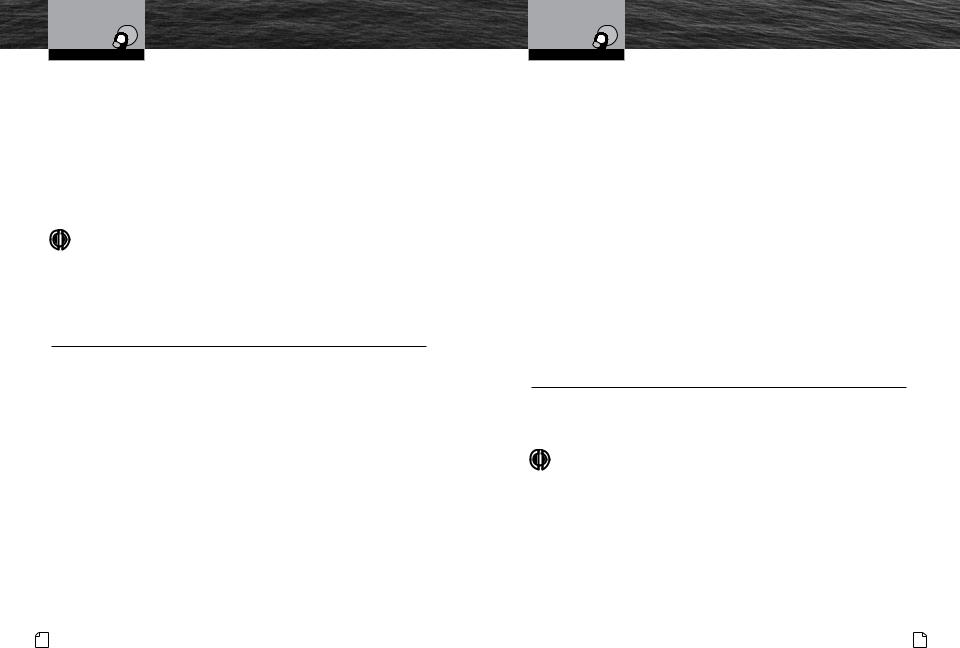
VHF Marine Radio
Procedures
VHF Marine Radio Protocols
Canadian Ship Station License
You need a Radio Operator’s Certificate if your vessel is operated in Canadian waters.. Radio Operator training and certification is available from the Canadian Power Squadron.. Visit their website (http://www..cps-ecp..ca/english/newradiocard..html), contact the nearest field office or write: Industry of Canada, Radio Regulatory Branch, Attn: DOSP, 300 Slater Street, Ottawa, Ontario, Canada K1A 0C8..
User Responsibility And Operating Locations
All users are responsible for observing domestic and foreign government regulations and are subject to severe penalties for violations.. The VHF frequencies on your radio are reserved for marine use and require a special license to operate from land, including when your boat is on its trailer..
NOTE This device complies with part 15 of the FCC Rules.. Operation is subject to the following two (2) conditions: (1) This device may not cause harmful interference, and (2) This device must accept any interference received, including interference that may cause undesired operation..
FCC Warnings: Replacement or substitution of transistors, regular diodes, or other parts of a unique nature, with parts other than those recommended by Cobra may cause a violation of the technical regulations of part 80 of the
FCC Rules, or violation of type acceptance requirements of part 2 of the rules..
VHF Marine Radio Procedures |
• |
|
Maintain Your Watch |
||
|
Whenever your boat is underway, the radio must be turned On and be tuned to Channel
16, except when being used for messages..
Power
Try 1 watt first if the station being called is within a few miles.. Try a second call after waiting two (2) minutes.. If there is no answer, switch to a higher power.. This will conserve
your battery and minimize interference to other users by avoiding repeated calls..
Calling Coast Stations
Call a coast station on its assigned channel.. You may use Channel 16
when you do not know the assigned channel..
Calling Other Vessels
Call other vessels on Channel 16 or on Channel 9.. (Channel 9 is preferred for recreational vessel use..) You may also call on ship-to-ship channels when you know that the vessel is listening on a ship-to-ship channel..
Initial Calling on Channel 16 or 9
The use of Channel 16 is permitted for making initial contact (hailing) with another vessel.. The limits on calling must be followed.. Be reminded, Channel 16’s most important function is for Emergency Messages.. If, for some reason, Channel 16 is congested, the use of Channel 9, especially in U..S.. waters, may be used as the initial contact (hailing) channel for non-emergency communication..
Voice Calling
VHF Marine Radio Protocols
Limits On Calling
You must not call the same station for more than 30 seconds at a time..
If you do not get a reply, wait at least two (2) minutes before calling again.. After three (3) calling periods, wait at least 15 minutes before calling again..
Change Channels
After contacting another station on a calling channel, change immediately to a channel which is available for the type of message you want to send..
Station Identification
Identify, in English, your station by your FCC call sign, ship name, the state registration number, or other official number at both the beginning and end of each message..
Prohibited Communications
You MUST NOT transmit:
νFalse distress or emergency messages..
νMessages containing obscene, indecent, or profane words or meaning..
νGeneral calls, signals, or messages (messages not addressed to a particular station) on Channel 16, except in an emergency or if you are testing your radio..
νWhen you are on land.
Voice Calling |
• |
|
To Call Another Vessel Or A Shore Installation Such As A Lock Or Bridge Tender:
νMake sure your radio is On..
νSelect Channel 16 and listen to make sure it is not being used..
NOTE
Channel 9 may be used by recreational vessels for general-purpose calling.. This frequency should be used whenever possible to relieve congestion on Channel 16..
νWhen the channel is quiet, press the Talk button and call the ship you wish to call.. (Hold the microphone a few inches from your face and speak directly into it in a normal tone of voice — clearly and distinctly..) Say “[name of station being called] THIS IS [your vessel’s name or call sign]..”
νOnce contact is made on the calling channel, you must switch to a proper working channel.. See the channel listing on page 14 through 15..
6 English |
Nothing Comes Close to a Cobra® 7 |

Digital Selective Calling (DSC)
VHF Marine Radio Protocols
For Example
The vessel Corsair calling the vessel Vagabond:
Corsair: “Vagabond, this is Corsair (station license number call sign)..” Vagabond: “Corsair, this is Vagabond.. Over..”
Corsair: “Vagabond go to working Channel 68.. Over..”
Both parties switch over to the agreed upon working channel.... . .
Corsair: “Vagabond I need to talk to you about.... . Over..”
Vagabond: “Corsair in answer to your question about.... . |
Over..” |
Corsair: “Vagabond, thanks for the information about.... |
. (call sign and out)..” |
After each transmission, say “OVER” and release the microphone Push to Talk (PTT) button.. This confirms that the transmission has ended.. When all communication with the other vessel is totally completed, end the message by stating your call sign and the word “OUT..” Remember, it is not necessary to state your call sign with each transmission, only at the beginning and end of the message..
NOTE
For best sound quality at the shore station or other vessel receiving your call, hold the microphone/speaker at least 2 in.. (51 mm) from your mouth and slightly off to one (1) side.. Speak in a normal tone of voice..
Digital Selective Calling (DSC) |
• |
|
Digital selective calling is a semi-automated system for establishing a radio call.. It has been designed by the International Maritime Organization (IMO) as an international standard for VHF, MF, and HF calls and is part of the Global Maritime Distress and Safety System (GMDSS)..
DSC will eventually replace aural (listening) watches on distress frequencies and will be used to announce routine and urgent maritime safety information broadcasts.. Until DSC is fully implemented, it is still necessary to maintain a listening watch on Channel 16..
The DSC system allows mariners to instantly send a distress call with GPS position coordinates (requires a GPS receiver to be connected to the radio) to the Coast Guard and other vessels within range of the transmission..
DSC also allows mariners to initiate and receive distress, urgent, safety, routine, position request, position send, and group calls between vessels equipped with DSC capable radios..
Maritime Mobile
Service Identity (MMSI)
VHF Marine Radio Protocols
Maritime Mobile Service Identity (MMSI) |
• |
|
The MMSI Number Is Available In The U.S.A. From Any Of Two (2) Sources:
νU..S.. Power Squadron www..usps..org
νBoatU..S..: 1-800-563-1536 – www..boatus..com/mmsi
NOTE
The above references are for recreational vessels only.. Commercial vessels should contact the FCC..
An MMSI is a nine (9) digit number used on a marine radio capable of using digital selective calling (DSC).. It is used to selectively call other vessels or shore stations and is similar to a telephone number..
For your CobraMarine radio to operate in the DSC mode, you must enter your maritime mobile service identity (MMSI) number.. See page 41 for instructions on how to enter it..
In Canada, Contact:
νIndustry Canada Spectrum Management Office (only available on the Internet): http://strategis..ic..gc..ca/epic/internet/insmt-gst..nsf/vwGeneratedInterE/sf01742e..html
To Obtain An MMSI Number Outside The U.S.A.:
Users can obtain an MMSI from their country’s telecommunications authority or ship registry.. This may involve amending or obtaining a ship station license..
WARNING
This equipment is designed to generate a digital maritime distress and

 safety signal to facilitate search and rescue.. To be effective as a safety device, this equipment must be used only within communication range
safety signal to facilitate search and rescue.. To be effective as a safety device, this equipment must be used only within communication range
of a shore-based VHF marine channel to distress and safety watch system.. The range of the signal may vary, but under normal conditions should be approximately 20 nautical miles..
8 English |
Nothing Comes Close to a Cobra® 9 |
|
|
|
|
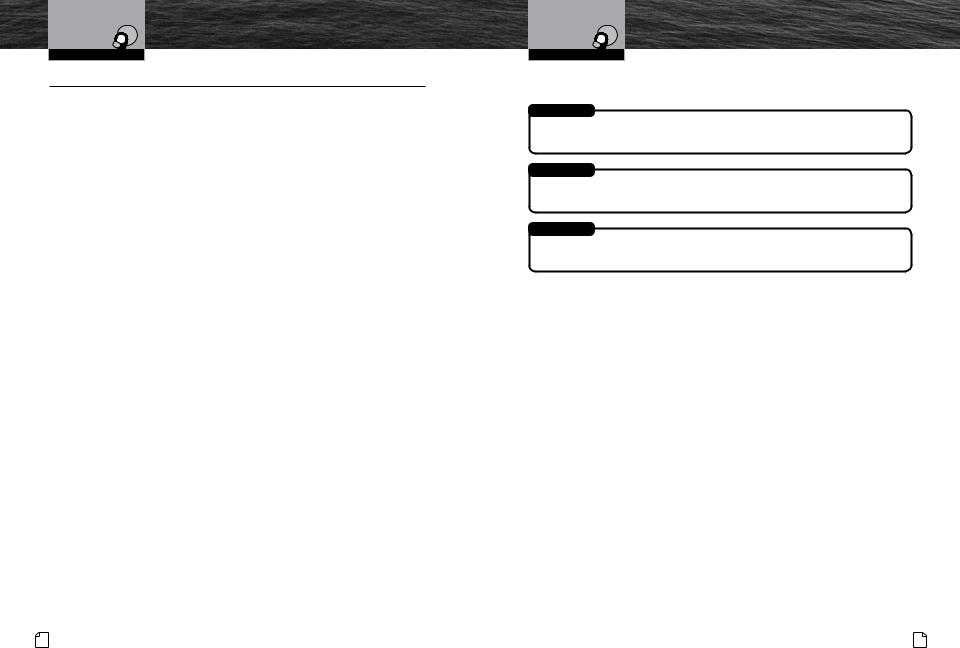
Radiotelephone Calls
VHF Marine Radio Protocols
Emergency Messages And Distress Procedure |
• |
|
The ability to summon assistance in an emergency is the primary reason to have a VHF marine radio.. The marine environment can be unforgiving, and what may initially be a minor problem can rapidly develop into a situation beyond your control..
The Coast Guard monitors Channel 16, responds to all distress calls, and coordinates all search and rescue efforts.. Depending on the availability of other capable vessels or commercial assistance operators in your vicinity, Coast Guard or Coast Guard Auxiliary craft may be dispatched..
In any event, do communicate with the Coast Guard as soon as you experience difficulties and before your situation becomes an emergency.. Use the emergency message procedures only after your situation has become grave or you are faced with a sudden danger threatening life or property and requiring immediate help.. Use channel 16 to communicate your emergency message.. Make sure you transmit on high power.. If you are merely out of gas, do not send an emergency message.. Drop your anchor and call a friend or marine to bring the fuel you need or to give you a tow..
Emergency Messages
And Distress Procedure
VHF Marine Radio Protocols
Marine Emergency Signals
The three (3) spoken international emergency signals are:
MAYDAY
The distress signal MAYDAY is used to indicate that a station is threatened by grave and imminent danger and requests immediate assistance..
PAN
The urgency signal PAN is used when the safety of the vessel or person is in jeopardy.. (This signal is properly pronounced pahn..)
SECURITE
The safety signal SECURITE is used for messages about the safety of navigation or important weather warnings.. (This signal is properly pronounced see-cure-it-tay..)
When using an international emergency signal, the appropriate signal is to be spoken three (3) times prior to the message..
If You Hear A Distress Call
You must give any message beginning with one (1) of these signals priority over any other messages.. ALL stations MUST remain silent on Channel 16 for the duration of the emergency unless the message relates directly to the emergency..
If you hear a distress message from a vessel, stand by your radio.. If it is not answered, YOU should answer.. If the distressed vessel is not nearby, wait a short time for others who may be closer to acknowledge.. Even if you cannot render direct assistance, you may be in a position to relay the message..
10 English |
Nothing Comes Close to a Cobra® 11 |
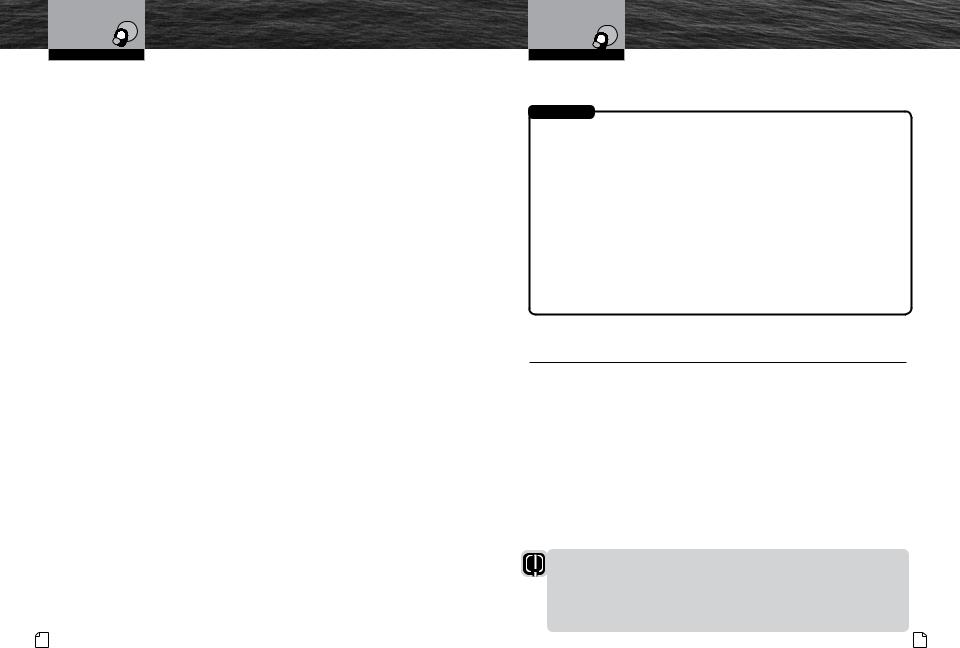
Emergency Messages
And Distress Procedure
VHF Marine Radio Protocols
Marine Distress Procedure
Speak slowly — clearly — calmly..
1.Make sure your radio is On..
2.Select VHF Channel 16..
3.Press Talk button and say:
“MAYDAY — MAYDAY — MAYDAY..” (Or “PAN — PAN — PAN,”
or “SECURITE — SECURITE — SECURITE..”)
4.Say:
“THIS IS [your vessel name or call sign]..” Repeat three (3) times..
5.Say:
“MAYDAY (or “PAN” or “SECURITE”) [your vessel name or call sign]..
6.Tell where you are:
(what navigational aids or landmarks are near)..
7.State the nature of your distress..
8.State the kind of assistance needed..
9.Give number of persons aboard and conditions of any injured..
10.Estimate present seaworthiness of your vessel..
11.Briefly describe your vessel (length, type, color, hull)..
12.Say:
“I WILL BE LISTENING ON CHANNEL 16..”
13.End message by saying:
“THIS IS [your vessel name or call sign] OVER..”
14.Release Talk button and listen.. Someone should answer.. If not, repeat the call, beginning at item 3 above..
Emergency Messages
and Distress Procedure
VHF Marine Radio Protocols
Keep the radio nearby.. Even after your message has been received, the Coast Guard can find you more quickly if you can transmit a signal for a rescue boat to hone in on..
For Example
“Mayday — Mayday — Mayday”
“This is Corsair — Corsair — Corsair” [or “Illinois 1234 AB“ three (3) times] “Mayday Corsair (or Illinois 1234 AB)”
“Navy Pier bears 220 degrees magnetic — distance 5 miles” “Struck submerged object and flooding — need pump and tow” “Four adults, three children aboard — no one injured” “Estimate we will remain afloat one-half (1⁄2) hour”
“Corsair (or Illinois 1234 AB) is 26 foot sloop with blue hull and tan deck house” “I will be listening on Channel 16”
“This is Corsair (or Illinois 1234 AB)” “Over”
It is a good idea to write out a script of the message form and post it where you and others on your vessel can see it when an emergency message needs to be sent..
Marine Distress Procedure – DSC |
• |
|
Digital Selective Calling (DSC) is a semi-automated system that will allow you to press the Distress button from any routine to make a distress call.. When the distress button is pressed, all other channels go to Standby mode and allow the digitally encoded “pre-programmed” message to take precedence.. Important information such as your MMSI number, position and name will be transmitted on Channel 16.. The distress alarm will sound for two (2) minutes or until the alarm is cleared..
The DSC system allows you to choose a “pre-programmed” distress call such as: “Man Overboard, Sinking, Collision..” There are many pre-programmed choices to choose from.. If a GPS is connected to your radio, your coordinates will also be sent to the Coast Guard as well as to other vessels that are within range of the transmission.. DSC calling also allows the user to initiate and receive distress, urgent, safety, routine, position request, position send and group calls between vessels equipped with DSC capable radios..
WARNING
This radio will generate a digital maritime distress and safety signal to help facilitate search and rescue.. This radio must be used only within
communication range of a shore based VHF station with a distress and safety watch system.. The range of the signal may vary, however, under normal conditions should be approximately 20 nautical miles..
12 English |
Nothing Comes Close to a Cobra® 13 |
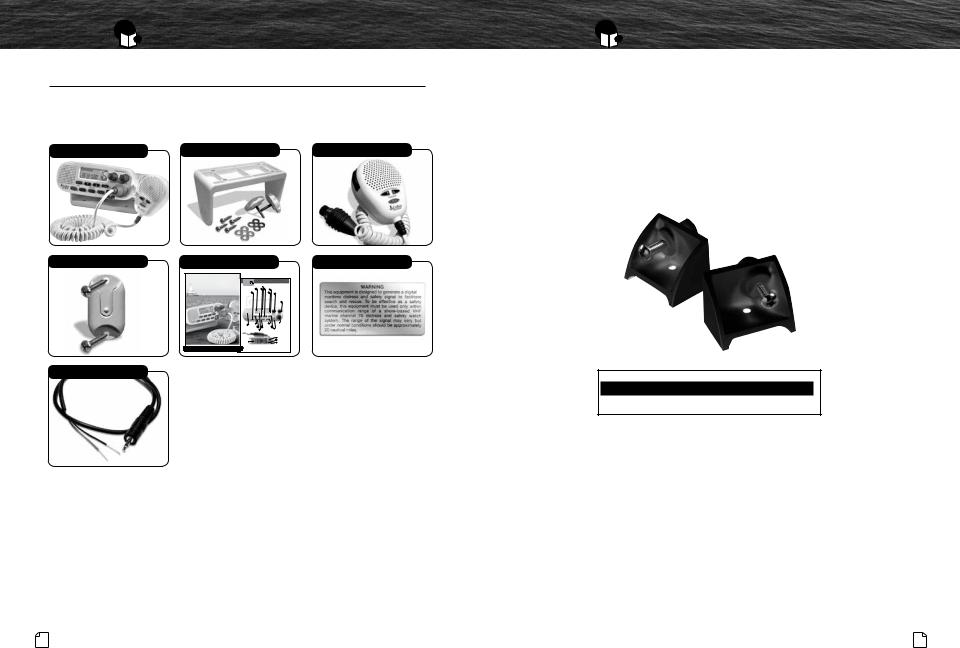
|
|
Included In This Package |
|
|
|
Accessories Order Info |
|
|
|
Installation And Start-Up |
|
|
|
|
Installation And Start-Up |
|
|
|
Included In This Package |
|
• |
|
|
|
|
|
|
You should find all of the following items in the |
|
Optional Accessories |
• |
||||
|
|
|
||||||
|
|
|
|
|
||||
|
package with your CobraMarine VHF radio: |
|
|
|
You can find quality Cobra products and accessories at your local Cobra |
|||
|
|
|
|
|
|
dealer, or in the U.S.A., you can order directly from Cobra. |
|
|
|
Transceiver* |
Transceiver Surface Mount Kit |
Microphone |
|
|
|
|
|
Microphone Mounting Kit |
Operating Instruction Manual |
Warning Sticker |
|
Transceiver Controls, |
|
|
Indicators And Connections |
|
MR F45-D
Class-D Fixed Mount VHF Radio
GPS Interface Cable
Item # |
|
Description |
|
CM 210-001 |
Flush Mount Kit |
Ordering From U.S.A.
Call 773-889-3087 for pricing or visit www..cobra..com..
For Credit Card Orders
Call 773-889-3087 [Press one from the main menu] 8:00 a..m.. to 5:30 p..m.. Central Time, Monday through Friday..
Make Check or Money Order Payable To
Cobra Electronics, Attn: Accessories Dept..,
6500 West Cortland Street, Chicago, IL 60707 U..S..A..
To Order Online
Please visit our website: www..cobra..com
14 English |
Nothing Comes Close to a Cobra® 15 |
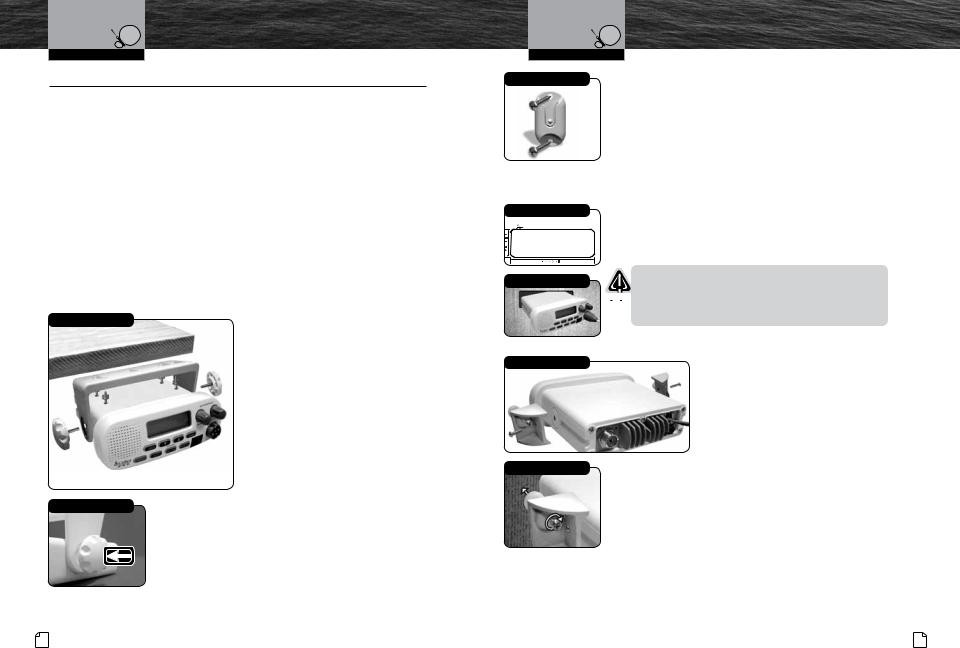
Mounting And
Powering The Radio
Installation And Start-Up
Mounting And Powering The Radio |
• |
|
Before using your CobraMarine VHF radio, it must be installed on your vessel.
Installing Your Radio
Choose a location for your radio where it will be conveniently accessible with the following factors in mind:
νThe leads to the battery and the antenna are best kept as short as possible.
νThe antenna must be mounted at least 3 feet (0.9m) from the transceiver.
νThe radio and all speakers need to be far enough from any magnetic compass to avoid deviation due to the speaker magnet.
νThere needs to be free air flow around the heat-sink fins on the back of the transceiver.
Surface Mount
A Surface Mounting kit is included with your CobraMarine VHF radio to allow its installation on almost any flat surface.
Surface Mounting Kit
Tilt Lock Knobs
To Mount The Transceiver
On Almost Any Flat Surface:
1.Use the mounting bracket as a template to drill holes for the mounting screws.
2.Attach the mounting bracket to the chosen surface with the mounting bracket screws and washers.
3.Attach the transceiver to the mounting bracket with the tilt lock knobs.
4.Tilt the transceiver to a convenient angle and
tighten the tilt lock knobs.
Mounting And
Powering The Radio
Installation And Start-Up
Microphone Bracket Microphone Bracket
To Install The Microphone Bracket:
Use Supplied Template
See page 75 for template.
Insert Transceiver
Attach Mounting Brackets
Adjust Screws
Install the microphone bracket on a vertical surface near the transceiver using the supplied stainless steel screws.
Flush Mount Kit (Not Included)
A Flush Mounting kit is available as an optional accessory for your CobraMarine VHF radio to allow its installation
in almost any flat surface. See page 15 for ordering information.
To Mount The Transceiver Flush In Almost Any Flat Surface:
1.Use the supplied template to mark and cut an opening in the flat surface. See page 75 for template.
NOTICE
Before cutting, be sure the area behind the flat surface is clear of any instruments or wires that might be damaged in the process.
2.Insert the transceiver into the opening.
3.Attach the mounting brackets to the sides of the transceiver with the adjusting screw flanges facing the back of the flat surface.
4.Tighten the adjusting screws against the back of the flat surface until the flange on the front of the transceiver is tight against the flat surface. Do not over-tighten.
16 English |
Nothing Comes Close to a Cobra® 17 |
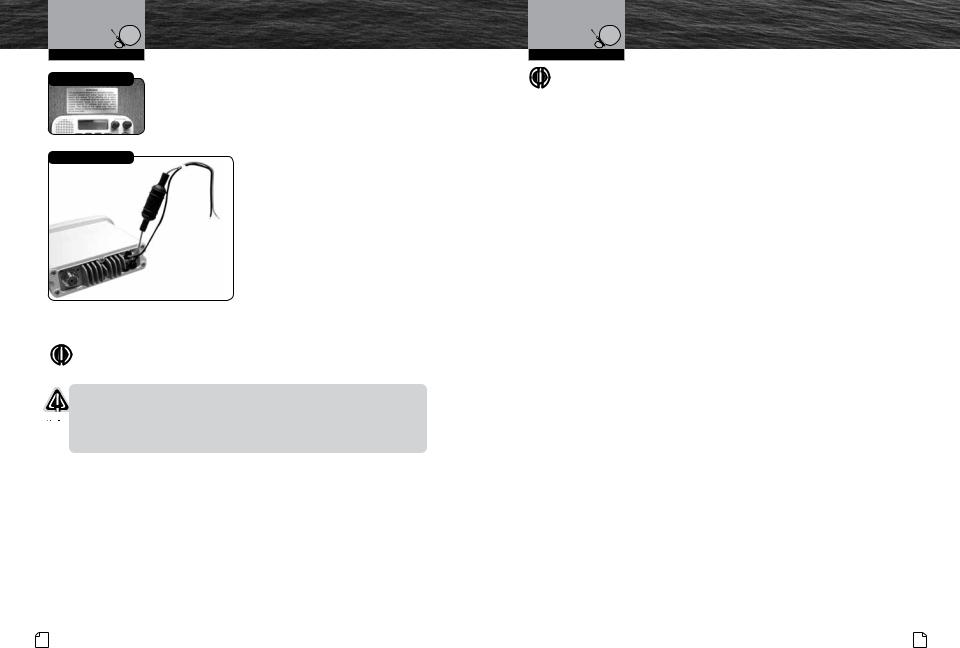
Mounting And
Powering The Radio
Installation And Start-Up
Warning Sticker
Power Connection Cables
Warning Sticker
FCC regulations require that the Warning Sticker supplied with this radio be applied to a spot where it is easily seen by the radio operator. Be sure the location is clean and dry before applying the sticker.
– +
Red Cable
Positive (+)
Black Cable
Negative (-)
Electrical Power Connection
Your CobraMarine VHF radio is powered from the vessel’s 13.8-volt negative ground direct current electrical system (12-volt nominal). A fused power connection lead is provided at the back of the transceiver.
To Connect To A Power Source:
1.Attach the black (-) wire to a negative (-) ground.
2.Attach the fused red power (+) wire to the positive (+) side of the power system.
NOTE
This radio will draw up to 8 amps when transmitting at full power.
NOTICES
A reverse polarity connection will damage the radio.
When replacing the fuse in your transceiver, use only the size and type originally provided.
Mounting And
Powering The Radio
Installation And Start-Up
NOTE
All wiring is best kept as short as possible. If the power leads must be extended, use a high-quality, marine-grade cable sized for up to 10 amps of current. To minimize voltage drop, choose a wire gauge as follows:
Length |
Wire Gauge |
Up to 1.5m(4.9ft) |
1.6 mils(#14) |
Up to 3.0m(9.8 ft) |
2.0 mils(#12) |
|
|
Up to 5.0m(16.4 ft) |
2.6 mils(#10) |
|
|
Up to 6.0m(19.7 ft) |
3.3 mils(#8) |
|
|
18 English |
Nothing Comes Close to a Cobra® 19 |
